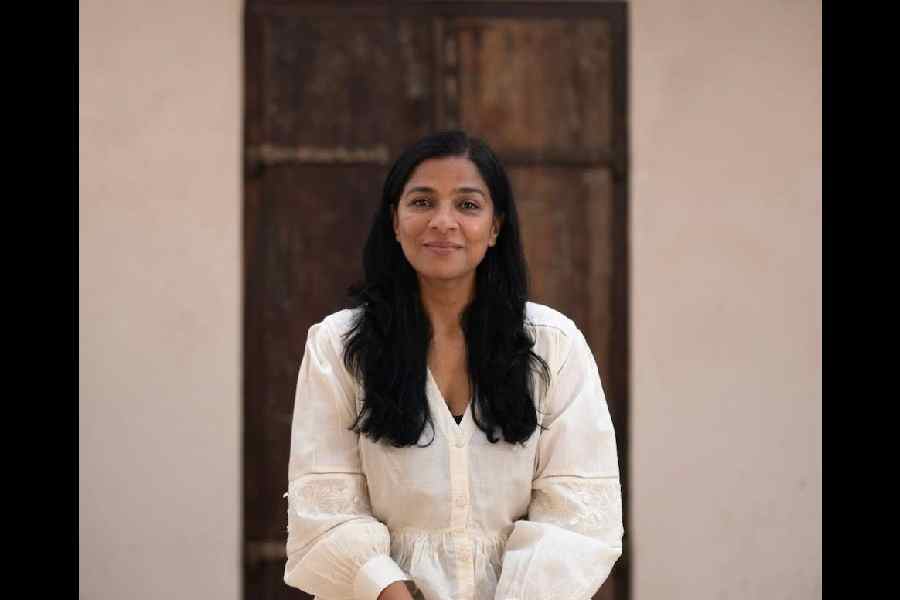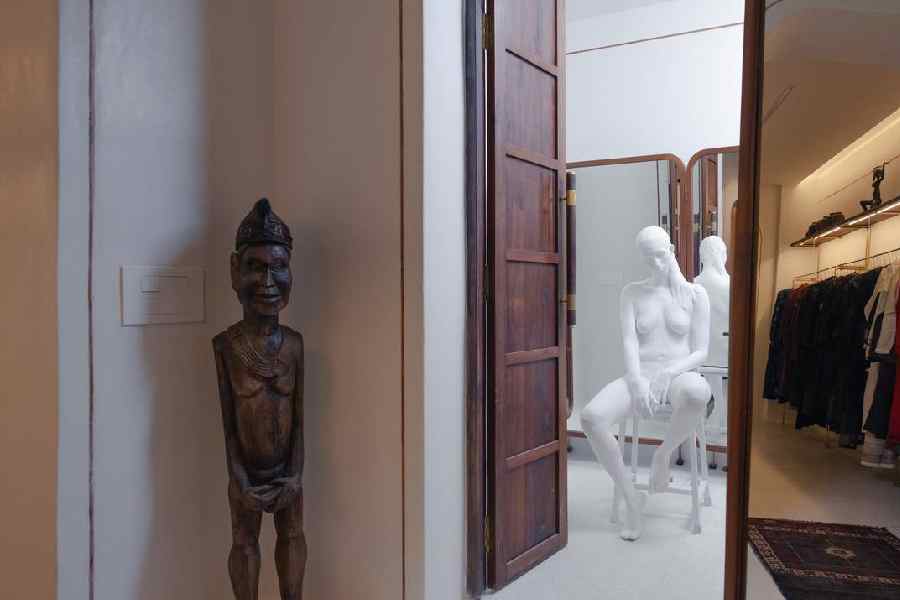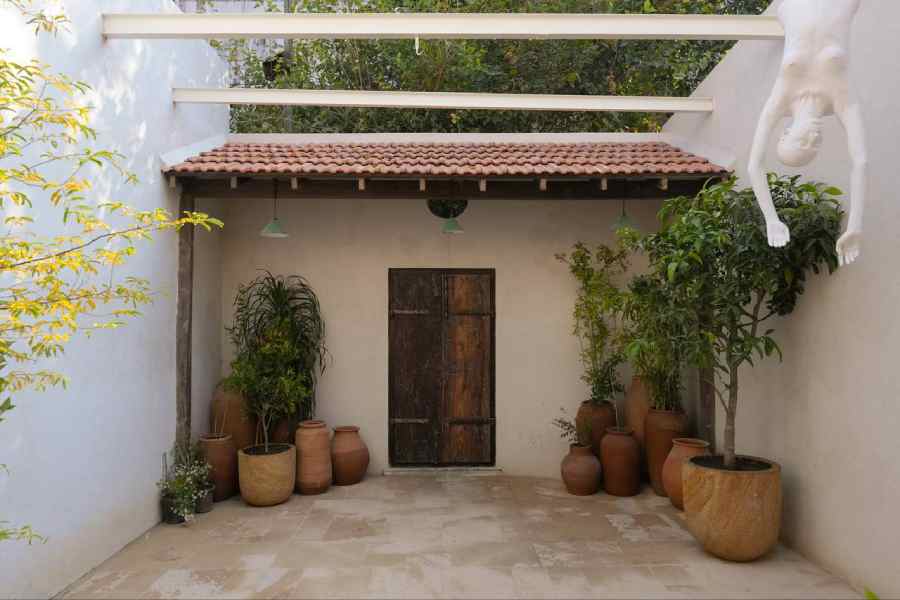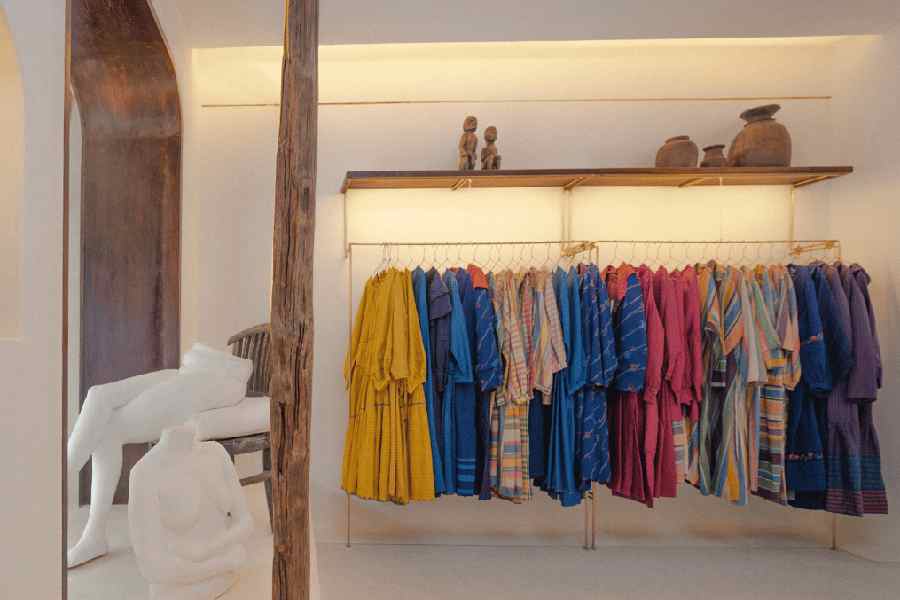Peaceful, blissful and so cosy that you might feel you are at home. Like the clothes Eka makes, the brand’s first flagship store in Lodhi market, Delhi wears the same vibes. Primarily done in warm and earthy tones, Eka has sculptures instead of your standard mannequins. In a chat with t2, Rina Singh of Eka takes us through the philosophy behind the store and the autumn-winter collection she has launched it with.
The store looks so much like the poetry your label personifies. Tell us how you perceived, visualised and executed it...
The store is now coming through after almost 11 years of us being in the industry. Initially, I started retailing outside India. Then I started showcasing at the fashion weeks in India. So, I started with retail first. I did my first fashion show in India in 2015 and I started retailing across the multi-brand stores in the country.

Rina Singh of Eka
Over the last few years, we were going steady, except that the pandemic kind of off-roaded all of us and at that time, we launched our website and to my surprise, the website did very well across India. That gave me a bit of a boost to think about Indian retail and doing my own brand outlet. And then we were looking for places and hunting Bombay, Delhi... where to go and what to do. There are only so many retail places actually. You count out the malls because we don’t belong there. Besides that there are only a few central places and nothing against it, but I think the entire market in India is dictated by trousseau and ceremonial. For ready-to-wear brands like mine, there aren’t many corners. Or, there is a retail area called The Dhan Mill where a lot of pret and offbeat brands operate their retail stores from. But for Eka, the kind of world that we are, I feel it’s kind of an old-world (feel) and it has a little nostalgic charm about it.
Also, I found that I needed a lot of breathing space around me in the store. The cute little shopping area, which is like a postcolonial architectural structure, has this beautiful courtyard and backyard and it has a lovely corridor in the front and it has that whole aesthetic of the Raj. I loved that. The whole market itself is so quaint and central and it’s kind of offbeat and not too much in your face and I thought it blended itself very beautifully with what I would imagine an Eka shop to be.
The fitment was already there. The rooms were constructed. Otherwise, aesthetically, Sandeep, my husband, and I were very aligned on what we wanted. And as a partner we found Dharmesh Jadeja of Dustudio, the architect, who also works with a lot of sustainable materials, in terms of construction. He uses a lot of old Indian traditional architectural techniques to build and I had this idea of doing this limestone-walled old room. Almost you transport that room from a fort or a palace from Mehrangarh to this postcolonial market in Lodhi. We have done arches and we have done engravings around the arches and the floor is all terrazzo and there is a lot of reclaimed wood and antiques. So, we have created a space which will be forever an Eka den and in it, the collection will come and go.
It feels like coming back home...
Also, the clothes are like that. They have a quality of familiarity. You find them so familiar that you don’t want to become another person. It’s not a figure-hugging dress or a stiletto or a dress in which you have to starve for a day to get into. They are part of your lifestyle. You live in them. The store is an extension of the same philosophy. It’s the kind of place where you find familiarity and comfort in the chaos.

I feel one should really ask questions like ‘Who am I?’, ‘What do I want to wear?’, ‘How do I feel?’ And, I think your clothes should really be in conversation with the people. You should be able to accept it as a part of who you are today. If you feel like wearing your grandmother’s sari, you should just be able to take it out and wear it.
You have replaced the mannequins with sculptures...
The kind of clothes I do, I don’t conform to mainstream fashion. So, the idea of clothing for self is almost like poetry for self. It announces you to a roomful of people and then you don’t have to reveal too much of yourself. Your clothes express you more than you yourself can. So, I have this tagline: ‘Clothes for poets’.
Like somebody is sitting, is a half torso, a woman who is sleeping, she is half clothed and half not. I felt that it’s just like an expression of extending beyond fashion and clothing as a mainstream idea. Wribhu Borphukon worked on this concept for us.
You are yourself a poet!

Maybe a failed one! (Laughs) I read a lot and make sense of half of it and the rest I figure out, but not entirely.
Your clothes have a sense of timelessness...
When I started my label, I used to say in my bio it’s ageless, shapeless... it’s actually fluid, genderless. My clothes should have that quality that you buy today, but you can take it out five years later to wear it again.
You shot the autumn-winter collection in Ladakh...
I have travelled a lot to Ladakh in the last few years and I was hugely inspired by everything. I am actually very inspired by nature to be honest. A lot of my childhood has been under trees. I think somewhere I find that sanity and myself again whenever I am lost, and trust me I have been lost a lot of times in life, whenever I have been out in nature. It just guides you home and by that I mean it can guide you within. It sort of centres you and we are all creative people and we need to align ourselves.
Ladakh’s serenity, community, culture, landscape, and the vastness of everything inspired me. So, we have done some abstract prints on the clothes. We have done long layers, big robes and multi-coloured checks and we have accentuated them with traditional jewellery.
What has the journey been like in these 11 years?
Honestly, I feel it’s the beginning. I am still wonder-eyed, learning and equally excited and thrilled and jaded like a college student who stays up at night to finish assignments. I think 10 years is the time when you can compile everything together and say that these were the mistakes and these were the learnings.
The challenge now would be to keep myself relevant. Fashion changes every one or two years. In terms of our niche, we have built it and are talking to the right people. We want to expand that community.
